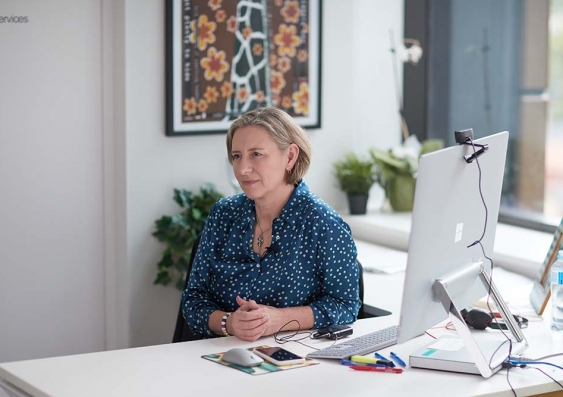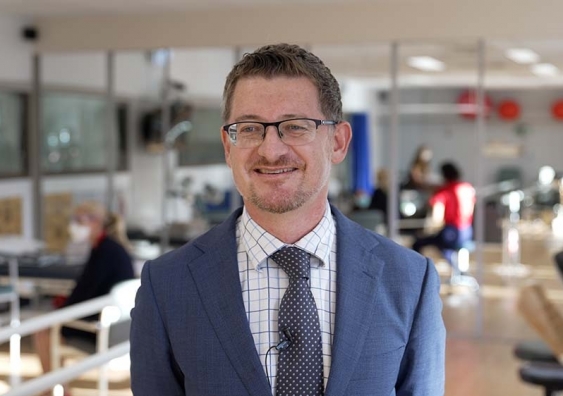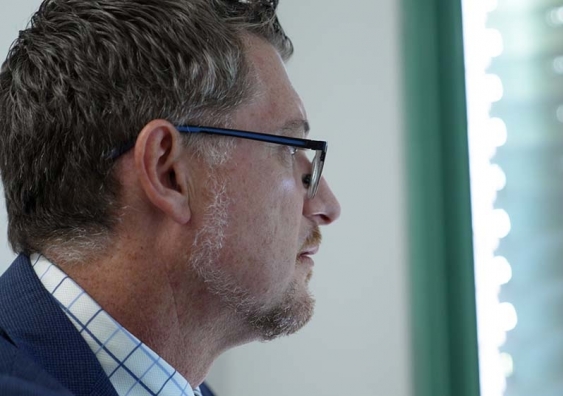Despite the uncertainty, there is hope for long COVID patients
It’s estimated one in 10 people infected with SARS-CoV-2 will have lingering symptoms, but most people will improve over time.
It’s estimated one in 10 people infected with SARS-CoV-2 will have lingering symptoms, but most people will improve over time.

As the world came to grips with the news of the pandemic unfolding in early 2020, online chatter among patients who were experiencing lingering symptoms after contracting COVID-19 began to spring up on social media.
The term ‘long COVID’ was first used by Dr Elisa Perego in Lombardy, Italy as a Twitter hashtag in May 2020 to describe her experience of COVID-19 infection as cyclical, progressive, and multiphasic. In other words, it was taking longer than anticipated for her to recover with symptoms that would come and go.
Further evidence of COVID-19 survivors experiencing similar long-term symptoms resulted in support groups popping up on other social media platforms such as Facebook.
To date, the World Health Organisation (WHO) estimates one in 10 people who have had the virus continues to feel unwell after 12 weeks. While the WHO uses the term ‘post-COVID-19' to describe lingering symptoms after initial infection from contracting the SARS-CoV-2 virus, their definition states this condition occurs usually three months from the onset of COVID-19 with symptoms that last for at least two months and cannot be explained by an alternative diagnosis.
“I think we're still learning a lot about long COVID. But we've come a long way from where we were in mid-2020, which is when long COVID first started to be talked about especially among patients themselves to start off with. The medical and research community caught up with what was going on, on social media, with patients realising they were taking a long time to recover, and experiencing a wide range of symptoms, some months after having an initial COVID-19 infection,” explains Professor Gail Matthews who is head of the Therapeutic Vaccine and Research Program at the Kirby Institute, UNSW Sydney and an Infectious Diseases physician at St Vincent's Hospital, Sydney.
Read more: What causes long COVID symptoms? Clues from under the microscope
“The ADAPT study is interesting because we commenced that research very soon after the beginning of the pandemic around April 2020 and we were able to get it going quickly through a major collaborative effort within St. Vincent's Hospital in Sydney. We started following people who had COVID-19 infections at the time, but we didn't know there was anything like long COVID,” says Prof Matthews.
As the team began to follow their patients, the researchers soon became aware a proportion of people in the study – about 30 per cent of people who were managed in the community – were not recovering at four months post-infection.
“And in fact, that group had still not recovered at eight months post-infection. So, that was the first important recognition of long COVID occurring in Australia. We were seeing similar reports coming out of the US and the UK, but ADAPT was the first Australian study to really document very clearly that this was an issue,” explains Prof Matthews.
The most common symptoms patients displayed included persistent fatigue; respiratory symptoms such as a persistent cough; shortness of breath, particularly in patients who were in hospital with pneumonia or in ICU; brain fog and difficulty concentrating. Some patients experienced high heart rates that didn’t settle.
“But really, there's a whole range of symptoms. In fact, up to 100 different symptoms have been described as part of the long COVID spectrum. Some of our patients who've been very unwell when they've been in hospital with COVID-19 have certainly taken a long time to recover. It could be because they've got scarring in their lungs, or just because they've been very sick in hospital. And that's not too surprising.
“But we also see many people with long COVID, who, in fact, were never hospitalised. They may have had some symptoms at home, but they were managed in the community. It was not severe enough to go to hospital, but they still have symptoms some months afterwards,” explains Prof Matthews.

“This is only one piece of a big puzzle. We haven't found the answer to long COVID, but what we have found is a signal," says Professor Gail Matthews. Photo: Richard Freeman/UNSW
The ADAPT study looks at a range of different outcomes in patients including neurological function, cardiac function, respiratory function, and mental health. But one important finding the study revealed was that immune cells were still activated in long COVID patients who still displayed symptoms.
“The long COVID patients were showing abnormal immune signals at about eight months post-infection. And we wouldn't expect to see that in somebody who had recovered from a viral illness. So this was an important finding, because it showed unequivocally, that biologically, people who had long COVID were different from those who'd had COVID and fully recovered,” explains Prof Matthews.
“This is only one piece of a big puzzle. We haven't found the answer to long COVID, but what we have found is a signal. And what that means is, when you have influenza, or any viral illness, your immune system switches on and it produces several signals, called cytokines – markers in the blood – which tell your immune system, there's a problem, there's a virus here. And that's often what’s responsible for some of the symptoms we get when we're sick such as fever or feeling unwell.”
Read more: Long COVID, what is it and what do we know about it?
After recovering from a viral illness, the immune system settles back down to a ‘resting state’.
“And that's what we saw in the people who recovered from COVID. But in the people who had long COVID, the signals from the immune system suggested it was still trying to activate. It was still trying to get rid of something that shouldn't be there eight months after having had the initial infection," explains Prof Matthews.
“Certainly at first, there was a lot of scepticism about the existence of long COVID. And I think a lot of people felt that individuals were just either traumatised or just taking the time to recover. I think gradually, the public has come to realise that it is a real syndrome and our research helps back that up by showing this. I feel the public still doesn’t really understand what it is and that's very understandable because I don't think we understand what it is fully, either.
“The good thing is that we're starting to collect more evidence that being vaccinated, for example, will certainly reduce your risk of getting long COVID. So that's an important public health message for the community.”

UNSW conjoint Associate Professor Anthony Byrne at the new long COVID clinic located at St. Vincent's Hospital. Photo: Richard Freeman/UNSW
UNSW conjoint Associate Professor Anthony Byrne is a clinician at the new long COVID clinic at St. Vincent’s Hospital. “We see about eight patients in the respiratory arm of the clinic and another eight patients in the rehab arm,” he explains. He is thankful to management for having the foresight to set up and establish a new clinic to treat long COVID patients.
Each week, A/Prof Byrne attends a multidisciplinary meeting to discuss the complex cases. They are considered complex because the patients have several organs affected by SARS-CoV-2. “We're fortunate here at St. Vincent's because we've got in our tertiary centre, lots of experts in many different specialties. We can refer cardiologists, psychiatrists, or immunologists, depending on what the main problem is.”
Common symptoms he sees in his patients include fatigue, lethargy, tiredness, sleep disturbance, and in those who had severe initial disease, breathlessness. “We know people who have been hospitalised with COVID – usually due to what's called hypoxic respiratory failure, pneumonitis, bilateral pneumonia – are more likely to go on to have breathlessness,” explains A/Prof Byrne.
“But that said, we also know that there are people that have not had severe disease who have persistent breathlessness many weeks and months after COVID. Sometimes we scan their lungs and find reasons why that might be. They may have some mild sort of pneumonitis (inflammation of lung tissue). But sometimes the lungs look structurally normal, so this may suggest there are probably nerves that are affected in these patients.”
A/Prof Byrne cautions that while there will still be people with long COVID for months, and potentially years to come, many researchers have put significant efforts into better understanding this condition.
“We'll have more of an understanding of the different symptoms and what specific cytokine abnormalities are and that will allow us to better target treatments. So that for those people that experience long COVID, we will have an armoury to treat them.”

"Sometimes the lungs look structurally normal, so this may suggest there are probably nerves that are affected in these patients," says Dr Byrne. Photo: Richard Freeman/UNSW.
Prof Matthews says the trajectory of long COVID and how it improves over time is still to be fully explored.
“The data suggests that even if you develop long COVID, most people will improve over time. We're about to do a two-year follow up of people who were infected in March 2020 and what we hope to see is that most people have recovered without significant long term impacts to their health.”
From a personal perspective, Prof Matthews says the last few years have been challenging. “In some ways, it's the challenge of a lifetime to work with colleagues nationally and internationally to try and understand long COVID. It's fascinating from an infectious disease perspective and such a fascinating period in history.”
“It does take its toll, but it’s also an amazing time to be an infectious disease researcher. Infectious diseases have been with us and affecting humanity since the start of time. There have always been huge challenges to our populations, and this will continue to be so undoubtedly into the future.”
Referring to the height of the HIV/AIDS epidemic, Prof Matthews reminds us we have come a long way. “I think the great thing about infectious diseases, from my perspective, is that we are making huge strides in our understanding of how to manage chronic infections successfully such as with HIV, and even cure others as with hepatitis C."
There is hope.